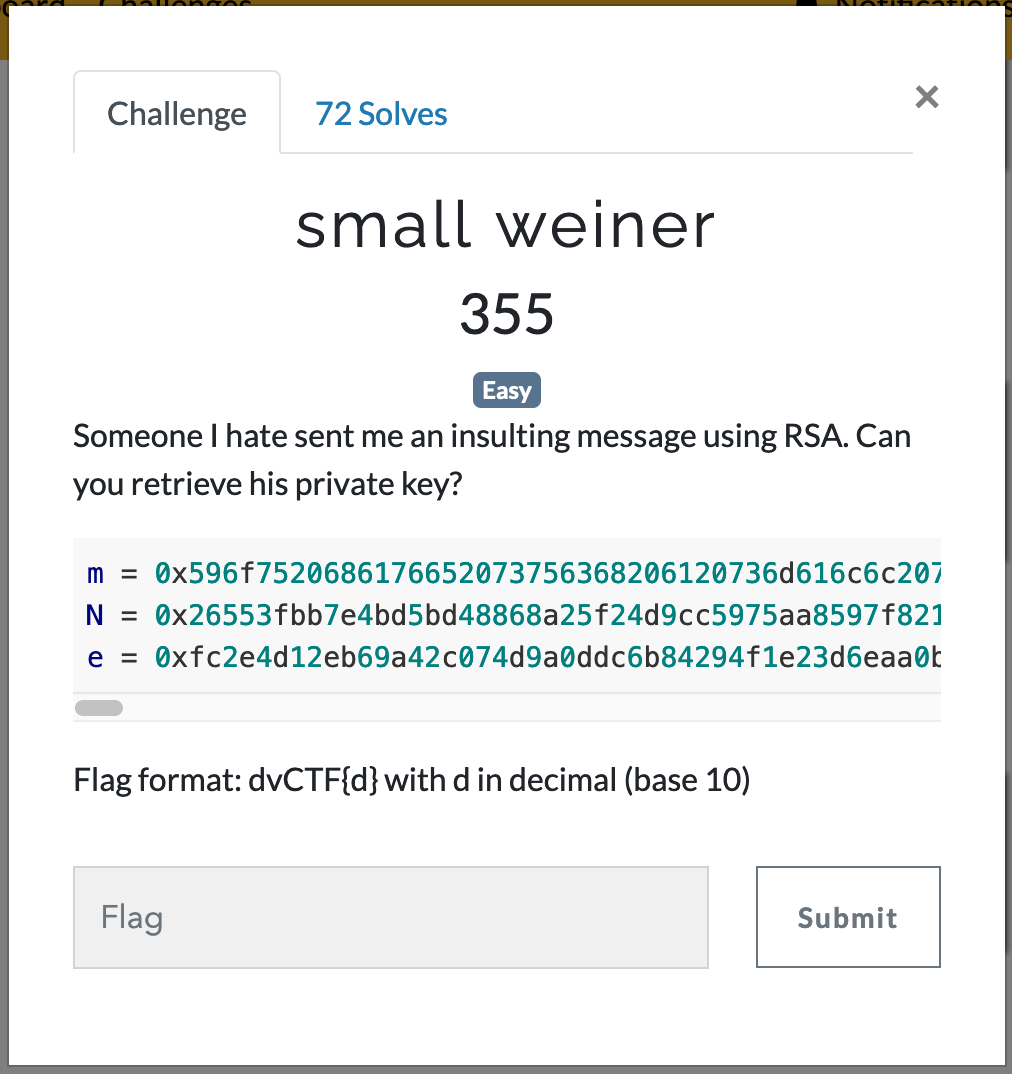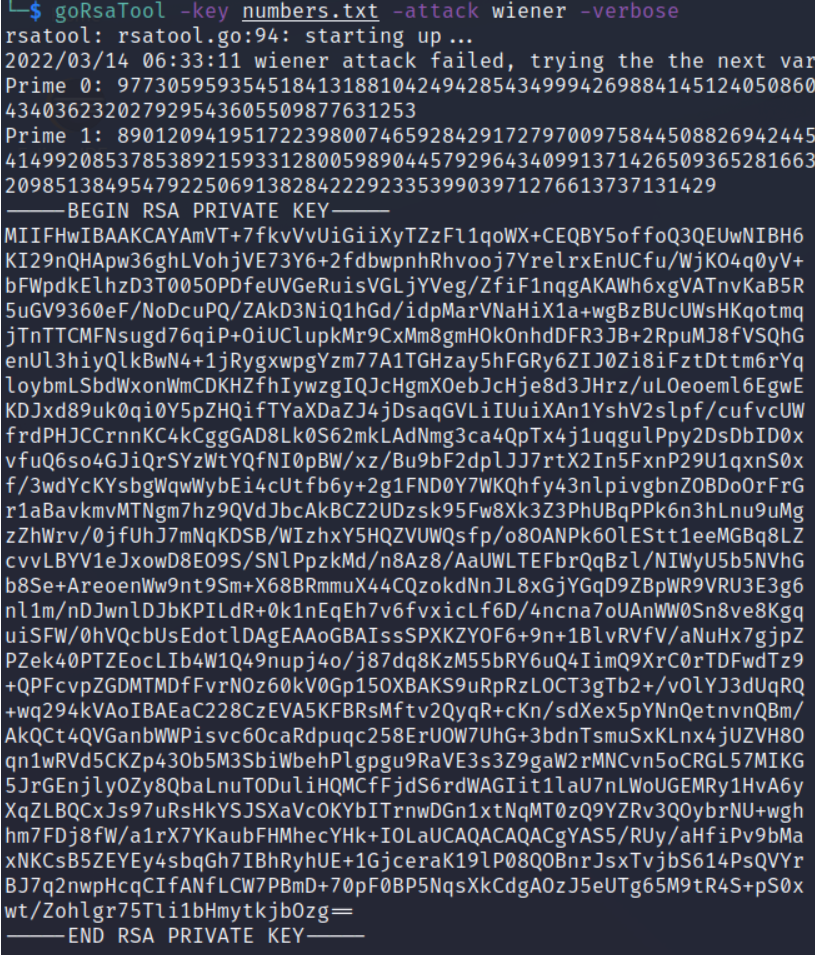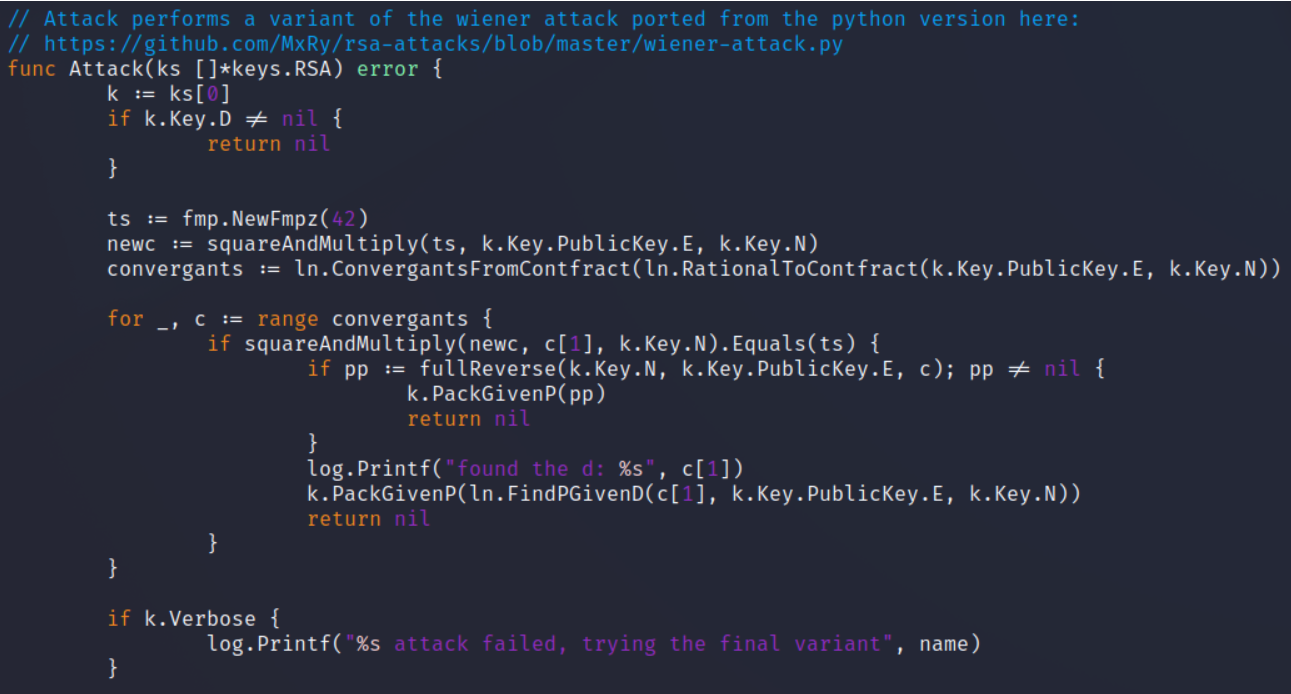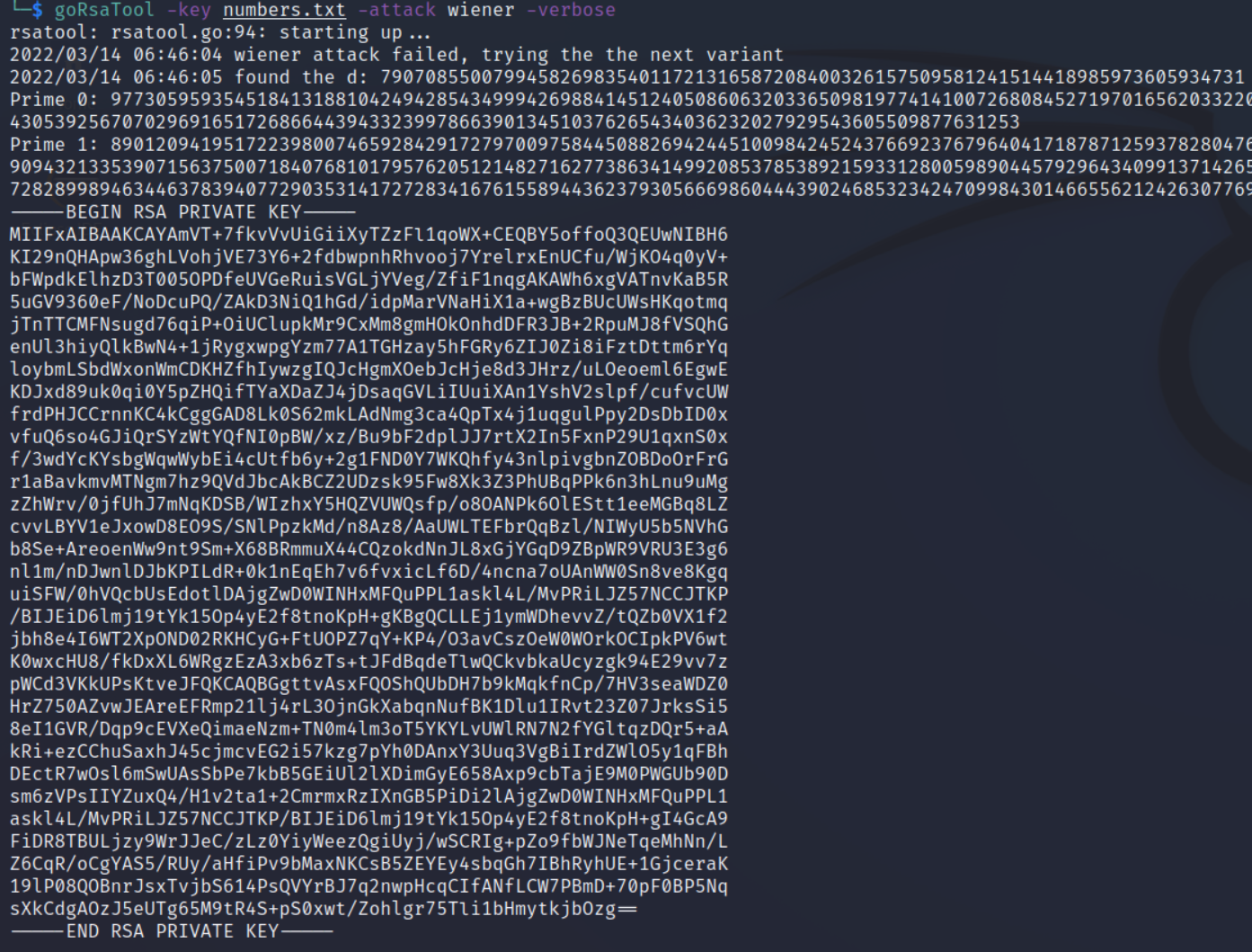Small weiner writeup
Posted on Mon 14 March 2022 in ctf
Cryptography
small weiner

To begin we start by search for ways to attack RSA. With some search engine magic we find the following article. This mentions an attack on low private exponents. By coincidence this attack on small ds was initially described M. Wiener, which perfectly matches the challenge name.
When trying to understand the attack I also found the following papers which are an interesting read:
Partial Key Exposure Attack On Low-Exponent RSA
Cryptanalysis of Short RSA Secret Exponents
And there exists also the following video by Jeff Suzuki on YouTube where he describes how Wieners attack works: Wieners attack
Since I didn't want to implement the attack myself I googled a little further and found the goRsaTool on GitHub. This tool can execute Wieners attack.
I then simply created a file numbers.txt that contains N and e from the challenge description.
# cat numbers.txt
n = 0x26553fbb7e4bd5bd48868a25f24d9cc5975aa8597f82110058e687dfa10dd0114c0d2011fa288dbd9d01c0a70dfa8212d5a218d513bdd8ebed9f75bc299e1461be8a23ed8ade96bc449d409fbbf5a328ee2ad3257e6c55a97641258730f74f4d3938f0df794546791ba2b1518b8d855e83f65f885d67aa000a01687ac605404e7bca681e51e6e195f77eb4785fcda0372e3d0fd90240f736243584677f89da4c6ab54d687897d5afb0801cc151c516b072aaa2d9aa8d39d34c230536cba077beaa88ff8e8940a5ba990cafd0b1326f209873a43a785d0c5477241fb6469b8c27c7d54908467a7525de18b2425901c0de3ed63472831c29818ce6efb0354c61f36b2e61146472e99209d198bc885ced0edb66eab62a968c9b98b49b756c689d69820ca1d97e1232c338084097078265ce79b25c1e37bc777247af3fee2ce7a87a697a120c0428327177cf6e934aa2d18e696474227d361a5c36992788c3b1aa8654b88852e897027d58b21576b25a5ffdcb9fbdc5167eb74f1c9082ae79ca0b89
e = 0xfc2e4d12eb69a42c074d9a0ddc6b84294f1e23d6eaa0ba53e9cb60ec0db203d31bdfb90eaca38189890ad26335ad6107cd234a415bfc73fc1bbd6c5d9da65249eebb57d889f91719cfdbd535ab19d2d317ffdf075870a62c6e05aac16c9b122e1c52d7dbeb2fb683514d0f463b58a4217f2e379e5a62be06e764e043a0eac5ac6af56816af926bcc4cd826ee1cfd4157496dc024042676503cec93de45c3c5e4dd9dcf85406a3cf93a9f784b9eef6e320cd9856aefff48df52127b98da8a0d207f588ce1c58e47419554590b1fa7fa3c38034f93a3a5112b6dd5e78c181abc2d972fbcb058575789c68c03f043bd4bf48d94fa7390c77f9fc033f3f01a5162d31056eb42a07397f3485b25396f93558466fc49ef80adea1e9d6c3d9edf529be5faf014669ae5f8e02433a2474d9c92fcc468d81aa0fd641a5647d55153713783a9e5d66fe70c9c2794325b28f20b751fb49359c4a8487bbfa7efc6270b7fa0ffe277276bba14027596d129fcbdef0a82aba24855bfd2155071b52c11da2d943
Then I run ./gorsatool -key numbers.txt -attack wiener -verbose

This seemed to work but the output doesn't match the required d in base10.
So add the line log.Printf("found the d: %s", c[1]) to output the value of d.

This results in the following output:

So the flag is dvCTF{79070855007994582698354011721316587208400326157509581241514418985973605934731}